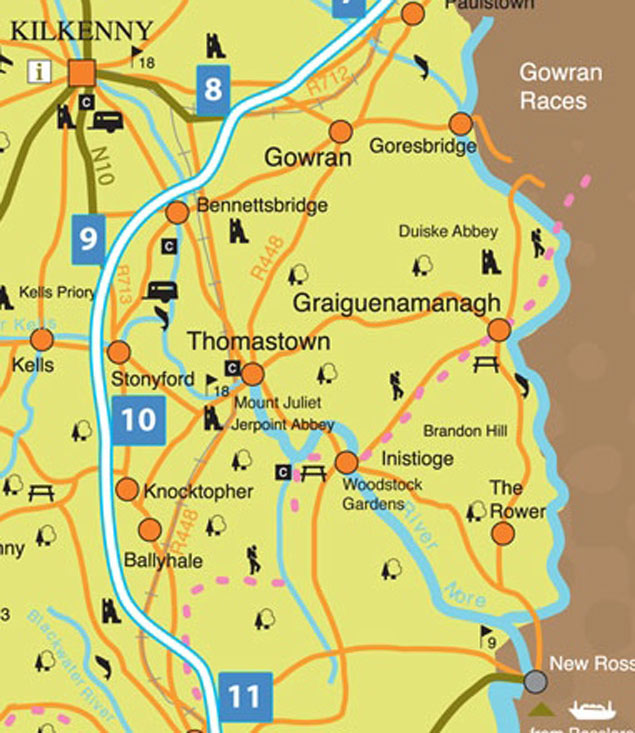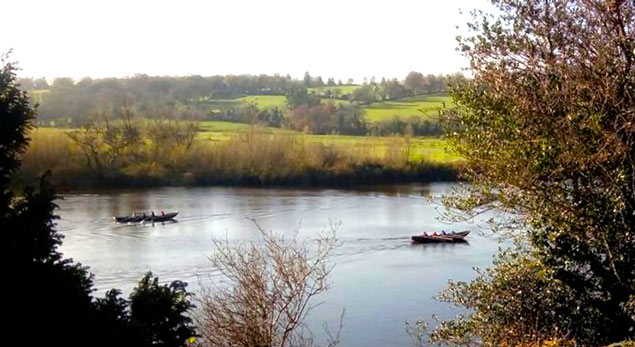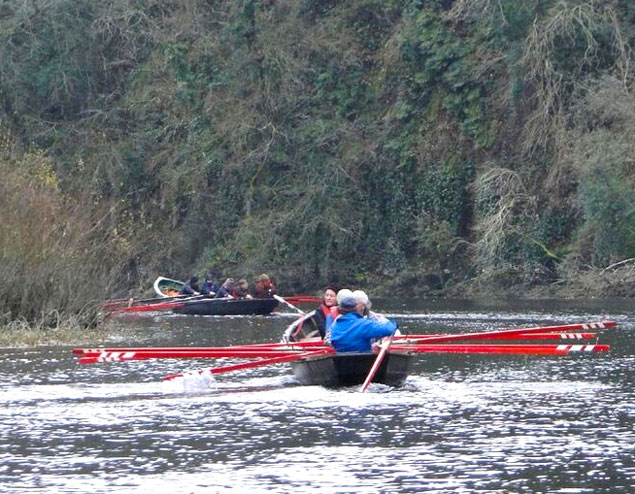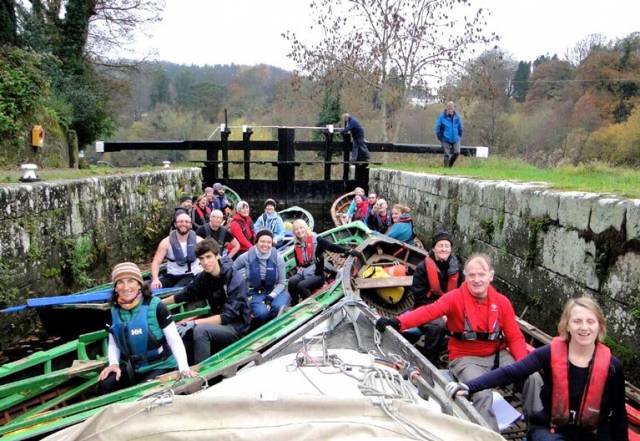The keen November sailors of Crosshaven, Dun Laoghaire, Howth and Bangor weren’t the only ones to get a bonus afloat from the weekend’s almost freakish sunshine before the first real hints of winter arrived today writes W M Nixon. The Cork city currach club Naomhoga Chorcai - a sub-group of that remarkable all-encompassing Leeside institution Meithal Mara – undertook a friendly invasion of the sublime yet often secret waterways of Ireland's southeast in the ideal weather window, and they neatly fitted in a complex yet worthwhile programme.
 Starting port – Graiguenamanagh in County Killkenny with its famous bridge. Photo: W M Nixon
Starting port – Graiguenamanagh in County Killkenny with its famous bridge. Photo: W M Nixon
 Secret waterways – the Cork currachs rowed along the Kilkenny-Carlow border on the River Barrow from Graiguenamanagh to overnight at New Ross, and then went up-country next day by the River Nore to the hidden port of Inistiog
Secret waterways – the Cork currachs rowed along the Kilkenny-Carlow border on the River Barrow from Graiguenamanagh to overnight at New Ross, and then went up-country next day by the River Nore to the hidden port of Inistiog
 Jack O’Keeffe at Tinnahinch on Tybot with Alan MacNamidhe’s guide dog Pippa
Jack O’Keeffe at Tinnahinch on Tybot with Alan MacNamidhe’s guide dog Pippa
They had themselves a fine old time in the last of the Autumn colours, rowing down the River Barrow from Graiguenamanagh with four locks of the Barrow Navigation to negotiate before overnighting at New Ross, and then next day rowing back up the Barrow again in Sunday’s sunshine to take a left into the River Nore, with a brisk final pluck upstream to finish their inland voyaging at Inistioge.
 A new currach-rowing waterway is found deep in Ireland’s southeast. Photo: John Diamond
A new currach-rowing waterway is found deep in Ireland’s southeast. Photo: John Diamond
 What’s to be found round the next bend in the river? There’s only way one way to find out….Photo: Jack O’Keeffe
What’s to be found round the next bend in the river? There’s only way one way to find out….Photo: Jack O’Keeffe
With five currachs and organizer Jack O’Keeffe’s Drascombe Coaster Tybot as mother-ship to make up a tidy flotilla crewed by a total of 26 voluntary rowers plus Pippa, friendly guide-dog to blind oarsman Alan MacNamidhe, the logistics alone would have defeated many larger organisations.
But Naomhaga Chorcai seem to think as one, and act in unison and effortless co-operation to get boats and people here, there and wherever else is necessary with a minimum of fuss, leaving no trace.
 Even a rusty railway bridge is brought to life by the vivid sunshine. Photo: Jack O’Keeffe
Even a rusty railway bridge is brought to life by the vivid sunshine. Photo: Jack O’Keeffe
They have returned to Cork with an abiding impression of a region in which rich farmland is intercut by river valleys of perfection, the winding waterways enlivened every so often by going through steep tree-lined gaps in the hills.
The smooth running of this friendliest of invasions was made possible by warm hospitality in every place visited, and full encouragement from all background organisations involved, with Naomhoga Chorcai particularly wishing to thank Waterways Ireland, Kennedy Boutique Hotel, The Otter Inistioge, Donnelly’s Pub, Kilkenny CC, New Ross Marina, New Ross Port, Graiguenamanagh RC, and New Ross RC AOK Soup Kitchen.


























































